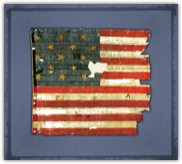
Also by Steve Vogel: The Pentagon
The Pentagon - A History

-
About The Book
Open or CloseThe creation of the Pentagon in seventeen whirlwind months during World War II is one of the great construction feats in American history, involving a tremendous mobilization of manpower, resources, and minds. In astonishingly short order, Brigadier General Brehon B. Somervell conceived and built an institution that ranks with the White House, the Vatican, and a handful of other structures as symbols recognized around the world. Now veteran military reporter Steve Vogel reveals for the first time the remarkable story of the Pentagon’s construction, from it’s dramatic birth to its rebuilding after the September 11 attack.
At the center of the story is the tempestuous but courtly Somervell–“dynamite in a Tiffany box,” as he was once described. In July 1941, the Army construction chief sprang the idea of building a single, huge headquarters that could house the entire War Department, then scattered in seventeen buildings around Washington. Somervell ordered drawings produced in one weekend and, despite a firestorm of opposition, broke ground two months later, vowing that the building would be finished in little more than a year. Thousands of workers descended on the site, a raffish Virginia neighborhood known as Hell’s Bottom, while an army of draftsmen churned out designs barely one step ahead of their execution. Seven months later the first Pentagon employees skirted seas of mud to move into the building and went to work even as construction roared around them. The colossal Army headquarters helped recast Washington from a sleepy southern town into the bustling center of a reluctant empire.
Vivid portraits are drawn of other key figures in the drama, among them Franklin D. Roosevelt, the president who fancied himself an architect; Secretary of War Henry L. Stimson and Army Chief of Staff General George C. Marshall, both desperate for a home for the War Department as the country prepared for battle; Colonel Leslie R. Groves, the ruthless force of nature who oversaw the Pentagon’s construction (as well as the Manhattan Project to create an atomic bomb); and John McShain, the charming and dapper builder who used his relationship with FDR to help land himself the contract for the biggest office building in the world.
The Pentagon’s post-World War II history is told through its critical moments, including the troubled birth of the Department of Defense during the Cold War, the tense days of the Cuban Missile Crisis, and the tumultuous 1967 protest against the Vietnam War. The pivotal attack on September 11 is related with chilling new detail, as is the race to rebuild the damaged Pentagon, a restoration that echoed the spirit of its creation.
This study of a single enigmatic building tells a broader story of modern American history, from the eve of World War II to the new wars of the twenty-first century. Steve Vogel has crafted a dazzling work of military social history that merits comparison with the best works of David Halberstam or David McCullough. Like its namesake, The Pentagon is a true landmark. -
Reviews About The Pentagon
Open or Close"Among books dealing with seemingly impossible engineering feats, this easily ranks with David McCullough’s The Great Bridge and The Path Between the Seas, as well as Ross King’s Brunelleschi’s Dome."
Kirkus Reviews (Starred Review)
"Vogel artfully weaves architectural and cultural history, thus creating a brilliant and illuminating study of this singular (and, in many ways, sacred) American space."
Publishers Weekly (Starred Review)
"An amazing story, expertly researched and beautifully told. Part history, part adventure yarn, The Pentagon is above all else the biography of an American icon."
Rick Atkinson, Pulitzer Prize winning author of An Army at Dawn
“The saga of the construction of the Pentagon, skillfully recounted by Steve Vogel, a military reporter on the Washington Post, is as enthralling as it is improbable. . . . It was one of the greatest engineering feats of the 20th century–driven by the intelligence and willpower of larger-than-life figures prepared to cut corners and demand the impossible. Mr Vogel has brought to our notice a thrilling achievement.”
The Economist, June 30, 2007
"Superb! Not only the best biography of a building ever written, but a fascinating look at the human architecture behind the Pentagon--the saints and scoundrels of our national defense. With his decades of experience covering the military and a web of insider connections, Steve Vogel has produced a book that's not only timely and a treat to read, but a stellar example of how to write history in the twenty-first century."
Ralph Peters, author of Never Quit The Fight
“This concrete behemoth – the largest office building in the world – is also the product of considerable human ingenuity and resourcefulness, as Steve Vogel amply demonstrates in his interesting account… This is not, of course, the first account of the [9/11] attack, but with its Clancyesque action and firsthand detail… it is surely the most vivid.”
Witold Rybczynski, The New York Times Book Review , June 10, 2007
"Vogel's account shines . . . . [A]n engrossing and revealing account. . . . Vogel provides a first-rate account of the transformation of a dilapidated Arlington neighborhood into what Norman Mailer called "the true and high church of the military industrial complex."
Yonatan Lupu, The San Francisco Chronicle, June 10, 2007
“Steve Vogel's marvelous work recounts the construction of one of the world's most iconic buildings - the Pentagon. But more compelling by far, he relates the human stories underlying this huge construction effort. . . .All this would of itself be enough to warrant a book but Vogel plunges on to an appropriate second story: the terrorist assault of 9/11 and the Pentagon's subsequent resurrection. This section of the book, due perhaps to the proximity of the event, is all the more compelling. . .
Frederick J. Chiaventone, New York Post, June 17, 2007
A Wall Street Journal selection for its 2007 summer reading list. “THE PLOT: How the Pentagon, the world's most famous defense building, was erected just as the U.S was pulled into World War II, and its subsequent history, including the rebuilding after the Sept. 11 attack. THE BACKSTORY: Mr. Vogel spent two years writing and researching the book. "The Pentagon" has drawn rave prepublication reviews, and within Random House there is hope that it will fill the usual summer slot for a big history title. It's printing 30,000 copies to start. WHAT GRABBED US: Anecdotes about the Pentagon's early days. The cafeteria couldn't keep up with the flood of workers; security was so lax in 1972 that the Weathermen walked in and planted a bomb, which exploded in a bathroom.”
Robert Hughes, The Wall Street Journal, May 11, 2007
“Vogel's writing coupled with the dynamic, conflict-strewn history of the Pentagon provides for a fascinating and comfortable read while giving new insight into an old Washington landmark."
Roll Call, June 5, 2007
-
Read An Excerpt
Open or CloseExcerpt. © Reprinted by permission. All rights reserved.
CHAPTER 1
DYNAMITE IN A TIFFANY BOX
Stimson looks for the right man
Henry Stimson was agitated. At age seventy-three, the secretary of war was the elder statesman of President Franklin D. Roosevelt’s cabinet in both age and demeanor, known for his dignity, wisdom, and Yankee reserve. To his staff at the War Department, Stimson seemed “like the Rock of Ages.” But he also was imbued with a deep streak of Old Testament temper, and an agitated Stimson was a fearsome thing. “Everybody always seemed to think of Stimson as a wonderful old gentleman,” one officer later said. “He was old all right, but he was a tough guy. If he had to, he knew how and when to use profanity.”
Stimson was swearing regularly in the fall of 1940. The largest peacetime military mobilization in American history had begun that spring, and it was bogged down. France had fallen in May, the Low Countries were overrun, and Britain was in grave danger. Roosevelt responded with a call to dramatically build the armed forces, and Congress answered with legislation raising the authorized strength of the Army eightfold, from 174,000 to 1.4 million. But before this great Army could be raised, it needed a roof.
Dozens of military camps had to be built immediately around the country to house and train hundreds of thousands of draftees. Work was flowing into the Army Quartermaster Corps’s once-sleepy Construction Division at unprecedented levels; the division’s monthly budget of less than $10 million soared to a figure eventually seventy times that amount. Orders to construct camps, munitions plants, housing projects, airfields, and ports were piling up. Construction headquarters took on the air of a Middle East bazaar, with some offices so crowded that workers had to hop over desks to move around. “The halls teemed with visitors, as contractors, materialmen, equipment dealers and a good many others beat a path to the men with a billion dollars to spend,” the Army’s official account of World War II construction in the United States notes.
The men with a billion dollars struggled and spent mightily, but soon fell on their faces. “They had gotten into desperate confusion,” in Stimson’s view. The mobilization of the entire Army was dangerously delayed by the construction mess. Almost nothing could be done until the facilities were built. General George C. Marshall, the Army chief of staff, had set ninety-day deadlines to build the camps, an order that proved hopelessly unrealistic. By November 1940, good weather for construction was vanishing, and the pressure was increasing. With few camps finished, Marshall’s ambitious schedule had to be drastically revised, and only token numbers of draftees called up. Guardsmen had quit jobs, vacated apartments, and left families to find they had no place to report. The Army was being portrayed by the press as an organization of dunces. “Even sadder than the delays were some of Mr. Stimson’s excuses,” scolded Time magazine, which laid the blame on “the bumbling quartermasters.”
Stimson was on his second stint as secretary of war, having served in the same job almost three decades earlier for President William Taft during the years leading up to World War I. Back then, he had seemingly endless time to get the Army ready for war, but no money. Now, Congress had appropriated fantastic streams of money, but there was no time.
“I am not satisfied [the Construction Division] is doing as rapid work as I think should be done,” Stimson noted in his diary. As the delays stretched on, the secretary grew “more and more agitated,” observed John J. McCloy, the “gnomelike” assistant secretary of war often at the old man’s side. McCloy, an astute Wall Street lawyer, had been recruited by Stimson earlier that year and quickly earned a reputation as the secretary’s top troubleshooter.
Stimson told McCloy they needed someone with the “necessary drive” to speed up the construction program. “If only a good man could be found the problem would be solved,” Stimson said. But who? The secretary’s attention was directed to a dynamic Army Corps of Engineers lieutenant colonel, Brehon Somervell, who had turned around the Works Progress Administration program in New York City in four years as administrator. Stimson instructed McCloy to check with his New York connections about Somervell’s temperament and ability. McCloy found Somervell had a “reputation as a driver and almost fearless energetic builder. . . . They all added up to the conviction that whatever the form of the organization, he was the man to head it.”
Somervell was already slotted for a humdrum assignment with a training command in the Midwest, but Marshall intervened. “Have him assigned for temporary duty here in the office of the Chief of Staff,” Marshall instructed his chief of personnel on November 8, 1940. “. . . Confidentially, the Secretary of War wants to get a look at him without Somervell being aware of this.”
Stimson wanted to see this man for himself.
I suppose the fellow who built the Pyramids was efficient, too
None of Brehon Somervell’s seven predecessors had fared well trying to tame New York City’s work-relief system. “Several had resigned in despair or disgust, one had died, probably of overwork, and none had lasted a year,” the New Yorker noted. There was no doubt that the New York office of the Works Progress Administration—the New Deal agency providing emergency public employment for the nation’s jobless—was in dire need of assistance. The New York WPA was one of the largest employers in the nation, providing jobs for 200,000 workers, and it spent one out of every seven WPA dollars in the nation. The program was grossly inefficient, in part because of its immensity but also because the city was home to powerful unions and left-wing parties that drew their support from the huge ranks of unemployed. WPA head Harry Hopkins had turned to the Army Corps of Engineers to bring some military discipline and engineering expertise to the agency.
Hopkins appointed Somervell Works Projects Administrator for New York City in the summer of 1936. “I consider it to be the most difficult WPA job in the nation,” he said. Funding cuts that spring forced thousands off the WPA payrolls in New York, sparking almost daily picketing and sit-in strikes. Somervell’s immediate predecessor, Victor Ridder, a philanthropist and liberal, had ended up foaming at the mouth about “Communist rats and vermin.” He suffered a nervous breakdown and resigned. The communist newspaper Daily Worker, which had campaigned against him under the slogan “Get Rid of Ridder,” crowed in victory. A similar fate was widely predicted for Somervell.
The only one not worried was Somervell. His first public comment on the fate of his predecessors was to cheekily suggest a new slogan for the Daily Worker: “Sink Somervell.” Somervell found the idea of workers on relief going out on strike “just fantastic” and tried a different tack from his predecessors. Instead of sending police to forcibly eject the protesters—a step that guaranteed screaming headlines—Somervell simply locked the bathrooms. Strikers held out as long as their bladders did, then filtered off one by one.
Somervell imposed Army discipline on the WPA, threatening to fire any workers who interfered with the program. Leaving his office one day to find protesters had laid down in the pavement directly in front of his car, the colonel did not hesitate. He ordered his driver to start the car, hopped in, and slammed the door. When they realized Somervell was not stopping, the protesters leapt to their feet and fled. His war against shovel-leaners so aggrieved the Workers Alliance —the major WPA union—that it distributed cartoons depicting Somervell as Simon Legree, whirling a huge blacksnake whip above a terrified WPA worker. But Somervell soon made peace with labor; picket lines grew infrequent, and strikes a thing of the past. He cut administrative costs by two-thirds, bringing the WPA in line with private construction. Somervell transformed the sprawling, dysfunctional office into a quietly efficient billion-dollar business enterprise that laid sewers, built parks and playgrounds, battled child malnutrition, and constructed enough roads to reach Denver, by one estimate. “Charges of boondoggling, once the order of the day, have been rare during the Somervell administration,” the New York Times reported. The local union head was obliged to admit Somervell had done an able job getting the WPA’s management in hand, adding bitterly, “I suppose the fellow that built the Pyramids was efficient, too.”
Somervell cut a dapper figure in his mufti and trademark bow tie, and his dry and carefree sense of humor won over the New York press. “Well, girls, what’s wrong today?” he’d ask reporters, generally all men. He even chatted amiably with the Daily Worker reporter. “His manner is pleasant and shrewd, and there is a touch of Will Rogers in his public personality,” the New Yorker said.
His amiability could not always mask his ferocious temper, made all the more striking by his otherwise elegant ways. “Dynamite in a Tiffany box,” was how one industrialist would later describe Somervell. “He is out of the tradition of the Elizabethan Englishman, all lace and velvet and courtliness outside, fury and purposefulness within,” a journalist wrote.
Somervell was one of only two men who could hold his own with New York City Mayor Fiorello H. La Guardia using the “Little Flower’s” weapon of choice—a pair of lungs. The other, Robert Moses, the city’s powerful redevelopment czar, would actually outyell La ... -
Buy "The Pentagon"
Open or CloseBuy "The Pentagon" by Steve Vogel at any of these online dealers.

-
About Steve Vogel
Open or Close
Steve Vogel is the author of "The Pentagon" and a veteran military reporter for The Washington Post.
-
About The Book
Open or Close
"Through the Perilous Fight" combines bravura storytelling with brilliantly rendered character sketches to recreate the thrilling six-week period when Americans rallied from the ashes to overcome their oldest adversary—and win themselves a new birth of freedom.
-
Contact
Open or CloseEmail Steve Vogel:
ObscureMyEmail
Postal Mail for Steve Vogel:
P.O. Box 301
Barnesville MD 20838 -
Also by Steve Vogel
Open or Close
This study of a single enigmatic building tells a broader story of modern American history, from the eve of World War II to the new wars of the twenty-first century. Steve Vogel has crafted a dazzling work of military social history that merits comparison with the best works of David Halberstam or David McCullough. Like its namesake, The Pentagon is a true landmark.
Buy the Book
If you would like a signed and personally inscribed copy of Through the Perilous Fight or The Pentagon , please send a check or money order along with a note with the requested inscription and a mailing address for sending the books to the following address:
Steve Vogel
PO Box 301
Barnesville, Md. 20838
Hardcovers of each book are available for $25, and paperback for $15. Include $5 shipping/handling for each hardcover book and $4 for each paperback.
Steve Vogel
PO Box 301
Barnesville, Md. 20838
Hardcovers of each book are available for $25, and paperback for $15. Include $5 shipping/handling for each hardcover book and $4 for each paperback.



